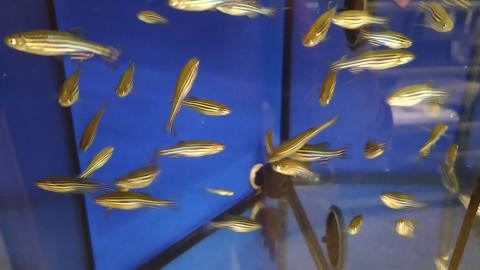New mechanism explains how fish sperm fertilise their aquatic environment

Researchers from the IBB, the IRTA, the CSIC and the University of Bergen have discovered a new molecular defense mechanism against osmotic stress which activates within fish sperm that is released into the aquatic environment.
16/03/2021
In an article published in the journal Proceedings of the National Academy of Sciences of the United States of America (PNAS), researchers from the IRTA, the Institute for Biotechnology and Biomedicine (IBB) at the Universitat Autònoma de Barcelona (UAB), the Spanish National Research Council (CSIC) and the University of Bergen, alongside the Norwegian Institute of Marine Research, present the discovery and evolution of a new intracellular osmotic stress defense route activated in fish sperm when released into the aquatic environment. This discovery reveals for the first time that fish have evolved adaptive solutions that are increasingly complex to maximise the swimming capacities of sperm in elevated condition of osmotic and oxidative stress. These adaptations represent an advantage in competitive fertilisation and help to explain the evolutionary success of fish in marine environments.
The mechanism discovered by the team of researchers consists in a rapid transport of a molecular water channel (aquaporin) to the sperm mitochondria, where it acts as an exit channel for hydrogen peroxide (H2O2), peroxiporin, during the production of energy, thus maintaining the motility of sperm flagella. Therefore, the intracellular transit of this peroxiporin directly regulates the speed and progressive motility of sperms in an aquatic environment.
Surprisingly, the researchers also discovered that the insertion of peroxiporin into the mitochondria is controlled by a series of cascades with increasingly sophisticated intracellular signalling. Thus, in fish species belonging to more ancestral lineages, such as the zebrafish and Atlantic salmon, sperm is activated in freshwater and the transport of peroxiporin is controlled by one single route which is activated by an elevation in the intracellular concentration of calcium. In contrast, in evolutionary more modern species, such as the gilt-head bream, in which the activation of sperm occurs in saltwater, and therefore in a highly hyperosmotic environment, the interaction between the calcium route and other routes activated by oxidative stress generates a multiplier effect in the transport of peroxiporin to the mitochondria.
The scientists managed to replicate this mitochondrial transport mechanism in a human cell line, which helped to reveal which differences in the peroxiporin modification pattern through the phosphorilation between marine and freshwater sperm define the molecular mechanism controlling the multiplier effect in the mitochondrial transport channel.
Original article:
François Chauvigné, Carla Ducat, Alba Ferré, Tom Hansen, Montserrat Carrascal, Joaquín Abián, Roderick Nigel Finn, Joan Cerdà. 2021. A multiplier peroxiporin signal transduction pathway powers piscine spermatozoa. Proceedings of the National Academy of Sciences of the United States of America. https://doi.org/10.1073/pnas.2019346118
This information is related to the following SDG
Life below water